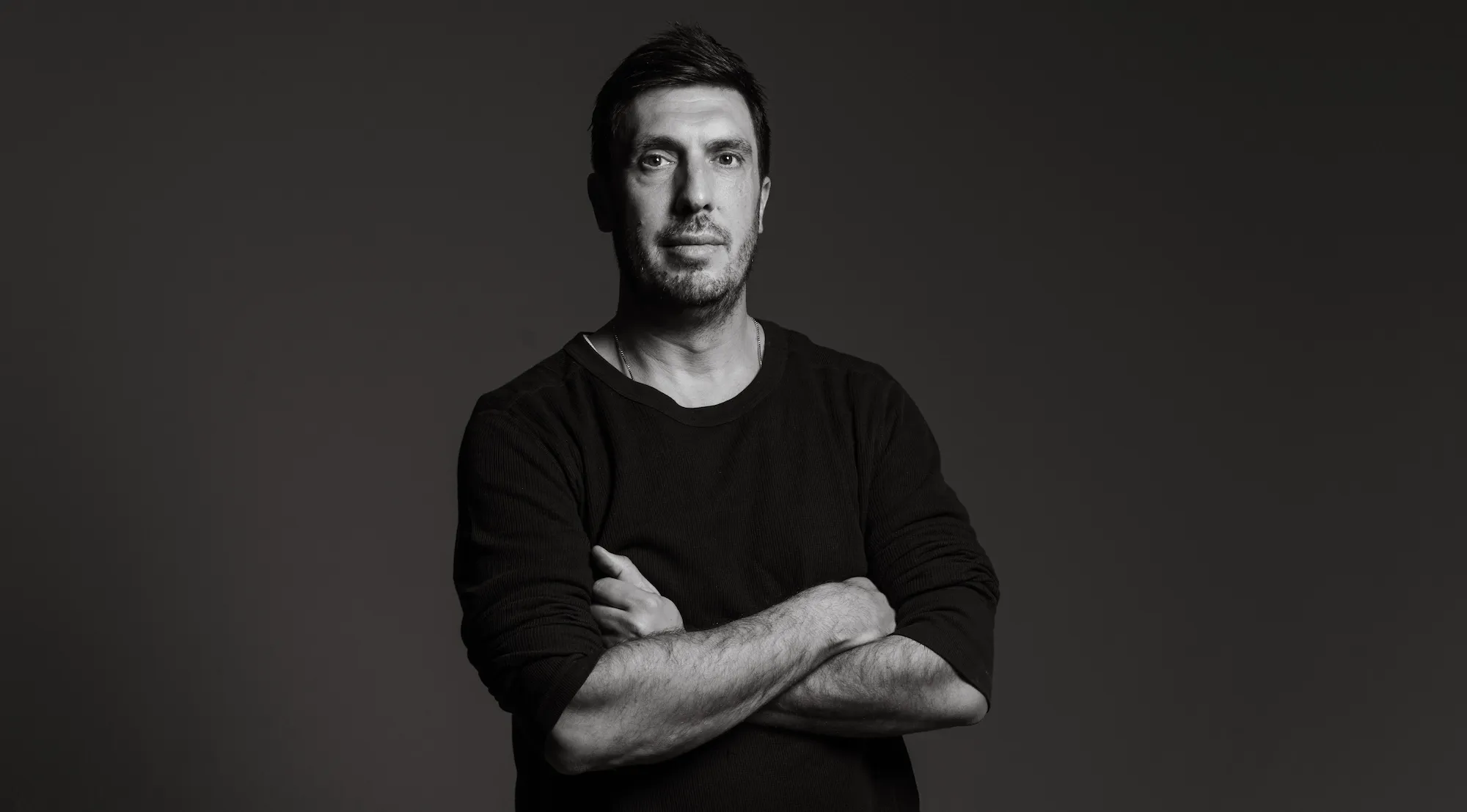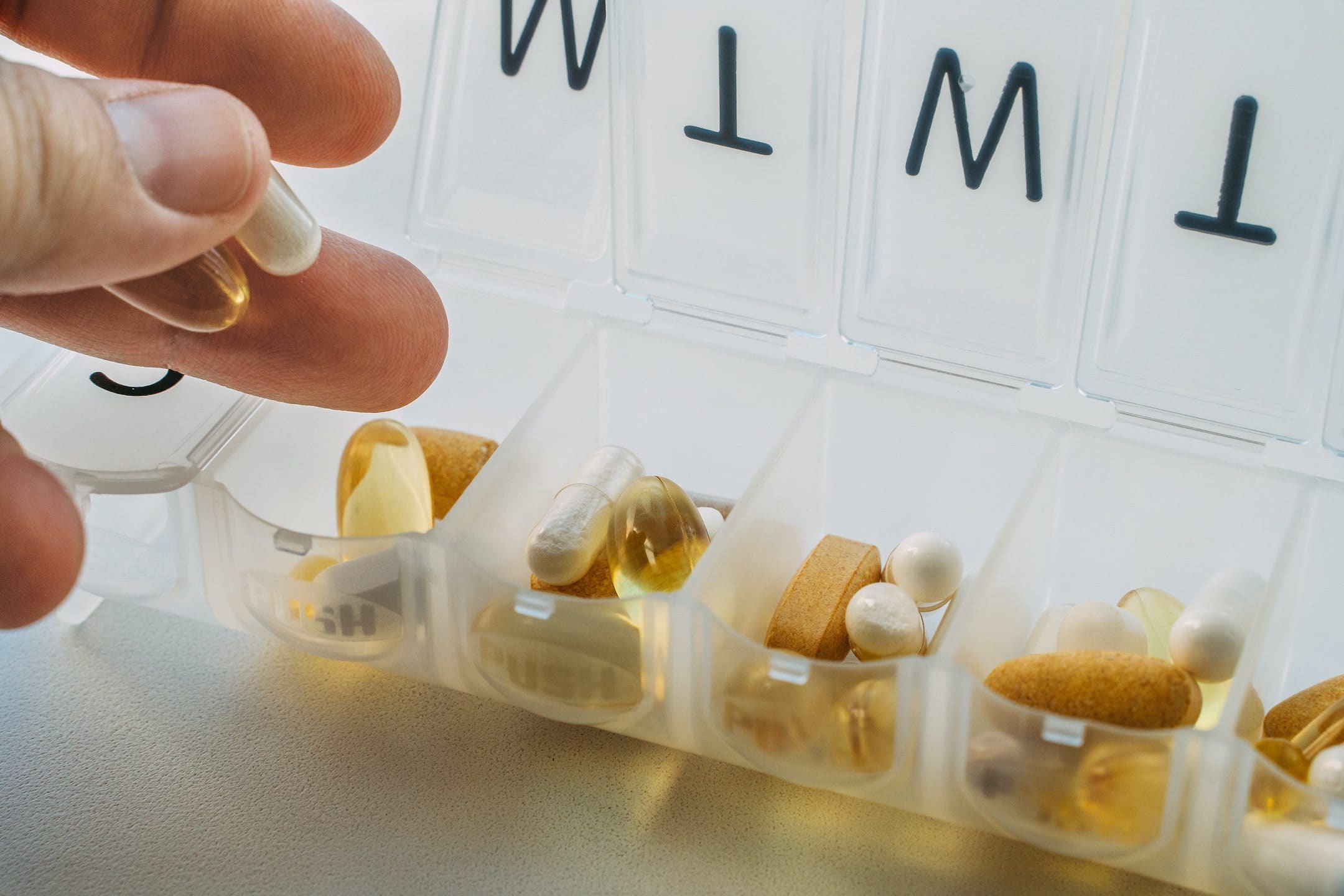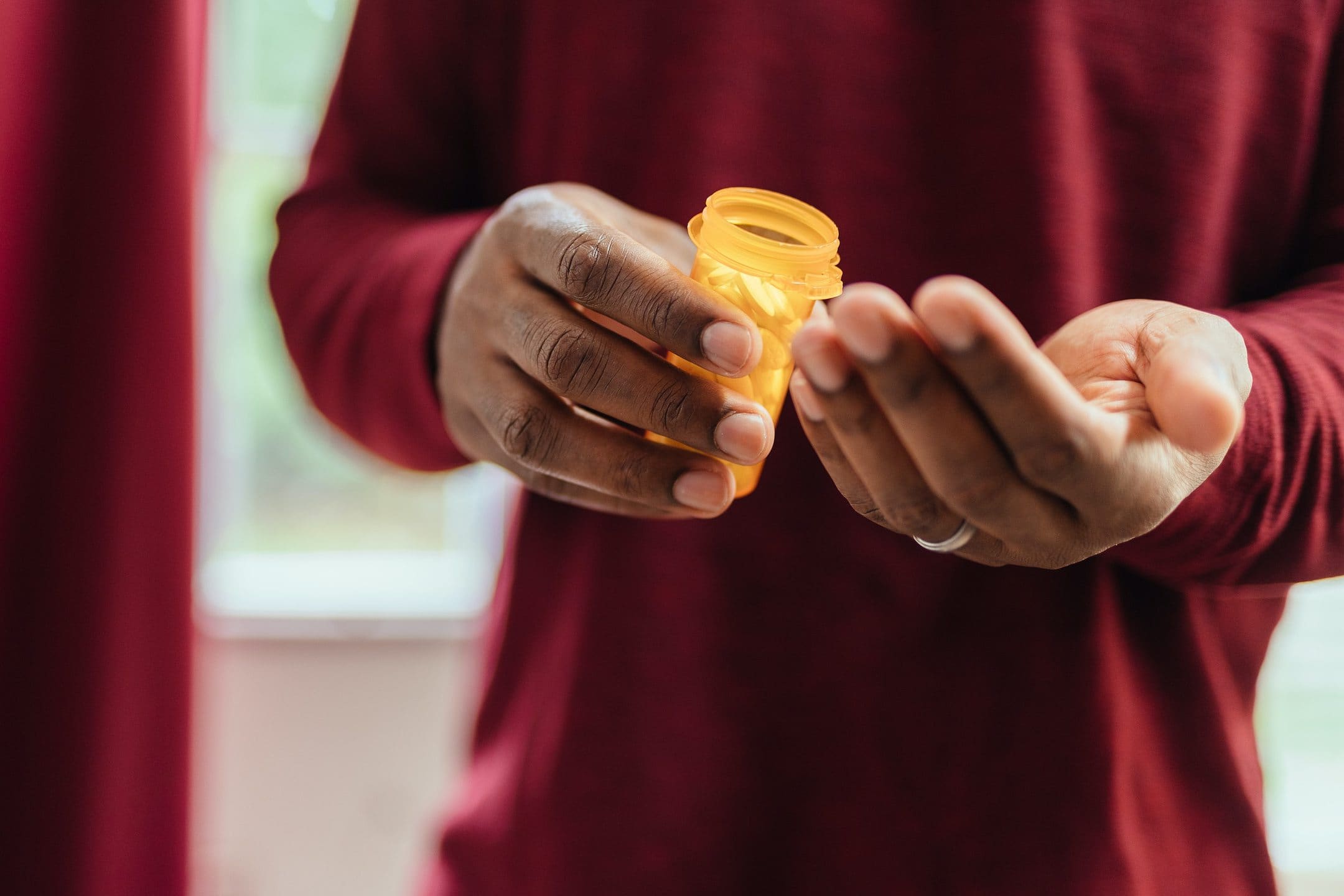Overview of Sperm Anatomy
Sperm meets egg and makes a baby—it’s a simple equation you learned back in high school biology. But what is sperm? What are its components, and what are those components made of? Understanding the sperm anatomy is the first step toward understanding sperm health.
Components of sperm anatomy
Sperm is the male sex cell, also known as a gamete. Measuring approximately 0.05 millimeter (0.002 inch) long, sperm cells are made up of a few distinct parts:
- the tail, made up of protein fibers, which helps it “swim” toward the egg
- the midpiece, or body, which contains mitochondria to power the sperm’s movement
- the head, which houses the nucleus where the sperm’s precious cargo—genetic information—is stored, as well as the acrosomal vesicle, a tiny structure at the tip of the sperm full of enzymes that helps the sperm penetrate the egg by digesting proteins and sugars on the surface of the egg.
Each sperm cell contains 23 chromosomes, which is half the number of chromosomes in a typical human cell; it’s known as a “haploid” cell. A chromosome is a molecule of DNA, the material that guides the growth and development of the entire human body. The egg contains the other half. Together, they create a fully realized cell of 46 chromosomes (known as a “diploid” cell), which then divides to become all of the other cells in the body. The fact that half of our DNA comes from the sperm and the other half from the egg is why we inherit some traits from each of our parents.
One of the most important thing that the genetics of sperm—and sperm alone—determines is the baby’s physical sex. If you’ve ever heard of the terms “XX” (to describe female) and “XY” (to describe male), these refer to the shape of the chromosomes that contains the genes that determine sex. Like all chromosomes, you get one (always an X) from the egg, and the other (either an X or a Y) from the sperm.
Some emerging research suggests that the percentage of X-chromosome-carrying sperm vs. the percentage of Y-chromosome-carrying sperm (in other words, his chances of fathering a boy or a girl) an individual man has may be determined by genetics—and it may not always be 50/50.1
Creating sperm anatomy: spermatogenesis
Sperm are produced in the testes (testicles) in a process called spermatogenesis. Approximately 50–100 million viable sperm are produced by the testes each day.2 It takes about 74 days to create the full anatomy of sperm.3
The process starts in vessels within the testes called seminiferous tubules, where stem cells divide to create immature haploid sperm cells with short tails. The sperm then moves to the epididymis, a duct behind each testis, where they develop their fully mature sperm anatomy. Sperm are stored in the epididymis until ejaculation. During ejaculation, the sperm travel from the epididymis to the urethra in the penis via another duct called the vas deferens. If sperm aren’t ejaculated, they’re eventually reabsorbed by the epididymis.
Spermatogenesis begins at puberty and continues, typically uninterrupted, until death. (There will, however, be changes in the health and quantity of the sperm with age.) The process is driven by the male sex hormone testosterone.
How fertilization—and conception—works
The process of natural conception begins with ejaculation, in which 80–300 million sperm are released in a fluid called semen. Sperm anatomy is essential to fertilization. The sperm travel, propelled by alternate contractions of their tail and assisted by the female reproductive system, approximately 8 inches per hour from the vagina, through the cervix, to the uterus and fallopian tubes, where hopefully, they will meet an egg. (If there’s no egg there yet, that’s actually okay—sperm can live in the fallopian tubes for up to 5 days.)
There are plenty of obstacles along the way: the acidity of the vagina, the cervical mucus, and the potential of going toward the wrong fallopian tube that doesn’t have an egg in it at all. Sperm with anatomy that’s abnormal or defective fall prey to these dangers, along with a good percentage of healthy sperm. Less than 1 in a million sperm from the original ejaculate will make it to the egg.
Sperm anatomy changes as a sperm travels through the vagina, cervix, uterus, and fallopian tubes. This phenomenon is known as “capacitation,” and these alterations to the sperm anatomy are actually made by the secretions of the female reproductive system. Firstly, the membrane of the sperm changes to allow it to “stick” to the egg. Secondly, the sperm enter a state called “hyperactivation,” in which they move faster and their tails beat more forcefully; this helps with the penetration of the egg.
Finally, when a sperm reaches an egg, it goes through a process called the acrosome reaction. After its membrane binds to the egg’s outer membrane, the contents of the sperm’s acrosome—the “cap” atop its pointed head—are exposed. The enzymes within the acrosome begin to dissolve the tough outer layers of the egg so that the sperm head can sink into the egg.4 Many sperm may begin this process by fusing to the outside of the egg, but once a single sperm enters the egg’s interior, the egg’s membrane hardens, preventing other sperm from penetrating.
Sperm parameters
Three characteristics of sperm determine fertility: how many sperm there are (sperm count/concentration), how efficiently those sperm are moving (sperm motility), and how many of them have proper sperm anatomy and structure (sperm morphology). These parameters can be tested in a semen analysis.
Sperm count and concentration
Sperm count is the total number of sperm in a particular quantity of semen, the fluid that carries sperm out of the penis. Sperm concentration refers to how densely packed those sperm are within the semen. For example, a sample may include 3 milliliters of semen and a total sperm count of 45 million; that would be a concentration of 15 million sperm per mL.
Fifteen million sperm per milliliter of semen is considered a normal sperm concentration, but researchers have noted that concentrations under 40 million/mL may impede chances of pregnancy.5,6 Having too little sperm in your semen is known as oligospermia; having no sperm at all is known as azoospermia.
Sperm motility
Motility refers to the ability of the sperm to move or “swim,” which is essential for them to move through the female reproductive system and fertilize the egg. Progressive motility is the best type of movement that can be seen in sperm testing—that means the sperm move forward in straight lines or in large circles, as opposed to in small tight circles or along erratic paths.
Ideally, 40–50% of your sperm are motile.5 Poor sperm motility or asthenospermia is diagnosed when less than 32% of the sperm are able to move efficiently.5
Sperm morphology
Morphology means the sperm’s anatomy, structure, and shape, which is ideally:
- a smooth oval head
- a well-defined acrosome, or cap, that covers 40–70% of the head
- a midpiece and a long tail with no visible abnormalities
Every man will have some abnormal sperm anatomy. In fact, a healthy man may have as little as 4–14% normal sperm.7 Poor sperm morphology, as evidenced by a very low percentage of sperm with normal anatomy, is known as teratozoospermia.
Potential abnormalities in sperm anatomy
Abnormal morphology can take a number of forms.
Abnormalities in the sperm head anatomy, size, or shape
- Amorphous heads
- Pyriform heads
- Vacuolated heads
- Tapering heads
- Elongated heads
- Large heads—more than 6µm long/3µm wide
- Small heads—less than 3µm long/2µm wide
- Small acrosome—covers less than 40% of the sperm head
- Absence of the acrosome
- Absence of the sperm head (AKA “decapitated sperm”)
- Multiple sperm heads
Defects in the sperm midpiece or “neck”
- Bent neck
- Wide neck—more than 2µm wide
Abnormalities in the sperm tail
- Coiled tail
- Broken tail
- “Hairpin” tail
- Absence of sperm tail (AKA “detached head” sperm)
- Multiple sperm tails
- Short or “stump” tail—less than 45µm long
Cytoplasm
- The presence of droplets of excess residual cytoplasm, or cell material that once held immature sperm together but should have been removed during the maturation process. These droplets can be found anywhere on the sperm anatomy.
How sperm anatomy affects fertility
Proper sperm anatomy is important because, as you learned above, it impacts a sperm’s ability to travel to and penetrate an egg. Motility and morphology are interconnected—the shape of a sperm can affect its ability to move as well as its speed. Sperm with abnormal anatomy may not reach the egg at all, or may not be able to penetrate the egg for fertilization. Additionally, emerging research is illuminating the relationship between sperm anatomy and the health of a pregnancy, suggesting that poor morphology may be a contributor to miscarriage.15
However, some men with abnormal sperm anatomy are nonetheless fertile and able to produce completely healthy pregnancies. A low percentage of normal sperm—or even no normally shaped sperm at all—does not necessarily mean you are infertile. In fact, in one study, nearly 30% of men with 0% normal morphology were still able to achieve pregnancy with their partner without fertility treatment, as compared to 55% of men with healthy morphology results.8
The relationship between morphology and fertility is not completely understood.14
What affects sperm anatomy?
Sperm morphology, the proper anatomy of sperm, can be impacted by many factors, including:
- Diet. Studies demonstrate that the so-called “Western diet,” which is higher in refined grains, fried foods, red meat, and added sugars, is associated with poor morphology, as is a diet high in processed meats.9,10 The development of healthy sperm anatomy can be supported by diets rich in folic acid, omega-3 fatty acids, and antioxidants.11
- Physical activity. Research demonstrates that physically active men have improved sperm morphology when compared to their more sedentary counterparts.12
- Cigarette smoking. Smoking is strongly correlated with poor sperm morphology.13
- Genetic factors. Certain abnormalities in sperm anatomy may be inherited.14
- Age. Studies indicate declines in normal sperm morphology of 0.2% to 0.9% per year of age, or a 4–18% decrease between age 20 and age 40.16
Changing your lifestyle can have a significant impact on the health of your sperm and the development of proper sperm anatomy.
References:
- Trends in Population Sex Ratios May be Explained by Changes in the Frequencies of Polymorphic Alleles of a Sex Ratio Gene: https://link.springer.com/article/10.1007%2Fs11692-008-9046-3
- Fertility and the Aging Male: https://www.ncbi.nlm.nih.gov/pmc/articles/PMC3253726/
- Kinetics of the germinal epithelium in man: https://eurekamag.com/research/024/923/024923058.php
- Acrosome reaction in human spermatozoa: https://www.sciencedirect.com/science/article/abs/pii/S0015028216493441
- World Health Organization reference values for human semen characteristics: https://www.who.int/reproductivehealth/topics/infertility/cooper_et_al_hru.pdf
- Normal reference ranges for semen quality and their relations to fecundity: https://www.ncbi.nlm.nih.gov/pmc/articles/PMC3739681/
- Clinical significance of the low normal sperm morphology value as proposed in the fifth edition of the WHO Laboratory Manual for the Examination and Processing of Human Semen: https://www.ncbi.nlm.nih.gov/pmc/articles/PMC3739680/
- Men with a complete absence of normal sperm morphology exhibit high rates of success without assisted reproduction: https://www.ncbi.nlm.nih.gov/pubmed/27751992
- Association of Dietary Patterns With Testicular Function in Young Danish Men: https://jamanetwork.com/journals/jamanetworkopen/fullarticle/2761546?utm_source=For_The_Media&utm_medium=referral&utm_campaign=ftm_links&utm_term=022120#zoi190810r32
- Meat intake and semen parameters among men attending a fertility clinic: https://www.fertstert.org/article/S0015-0282%2813%2902544-2/fulltext
- Diet and men’s fertility: does diet affect sperm quality?: https://www.fertstert.org/article/S0015-0282(18)30426-6/fulltext
- Physically active men show better semen parameters and hormone values than sedentary men: https://www.ncbi.nlm.nih.gov/pubmed/22234399
- Tobacco smoking and semen quality in infertile males: a systematic review and meta-analysis: https://bmcpublichealth.biomedcentral.com/articles/10.1186/s12889-018-6319-3
- Sperm Morphology (Shape): Does It Affect Fertility?: https://www.reproductivefacts.org/news-and-publications/patient-fact-sheets-and-booklets/documents/fact-sheets-and-info-booklets/sperm-morphology-shape-does-it-affect-fertility/
- Assessment of sperm factors possibly involved in early recurrent pregnancy loss: https://www.ncbi.nlm.nih.gov/pubmed/19540481
- Fertility and the Aging Male: https://www.ncbi.nlm.nih.gov/pmc/articles/PMC3253726/


